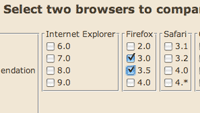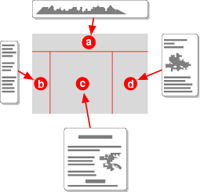I have added a new mode of displaying feature support information on “When Can I Use” resulting in the ability to select two browsers and only see what the differences are in feature support.
This allows you to pit two different browsers against each other to see which one outdoes which in what areas, but it is also useful to get a quick overview on which new features can be used in an upcoming release. For example, selecting Chrome 1 and 2 will let you see which new features are now available in Chrome 2.
This new mode will also tell you how much better one browser version is than another, note this is highly unscientific and doesn’t take into account support of features not mentioned on When Can I Use. Still, it’s kind of entertaining. Also, the mode generates URLs from your selection, so feel free to share your results with others.
Currently it only shows differences in support, I plan on also providing the option of displaying support common in both versions, as well as missing support. There may be a few other rough edges that need fixing, please let me know if you see anything that looks odd.

